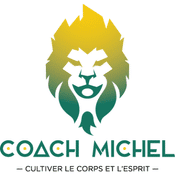Creation of soprology
In 1960, Professor Alfonso Caycedo (hence the name Caydian sophrology), a neuropsychiatrist by profession, created sophrology. It was created to offer support to those of its patients who were in a state of unhappiness but not in pathology.
It helps to support well-being. It allows everyone to know themselves better and to take care of themselves, based on an awareness of who they are, their potential and their desires for life in order to allow them to evolve towards them.
Recognised by the European Parliament as a « non-conventional medicine worthy of interest », sophrology now finds its place in hospitals, companies, colleges and lycées, in sports and in the daily lives of many people. It does not replace medicine in any way, but accompanies it.
THE MOST FREQUENT INDICATIONS ARE:
- Stress and emotional management
- The development of self-confidence
- Sleep disorders
- Psychosomatic disorders
- Preparation for a personal or professional deadline: moving, examination, job interview, surgical intervention…
- Improving concentration, learning or memory skills
- Preparation for childbirth
- A better awareness of the body schema: sport, dance, rehabilitation…
- Pain or chronic disease management
- Withdrawal from an addiction
- Nutritional support: anorexia, bulimia, diet
- Tinnitus and hyperacusis
- Fears
IMPORTANT POINT CONCERNING CAYCEDIAN SOPHROLOGY:
Caycedian sophrology is not relaxation.
The global bodily relaxation on which it is based is a tool, not an end in itself. For this reason, Caycedian sophrology is practiced standing or sitting, and not lying down.
Caycedian sophrology is not hypnosis. Each session is done in conscience.
Sophrology does not replace therapeutic treatment; however, it can increase its effectiveness.

